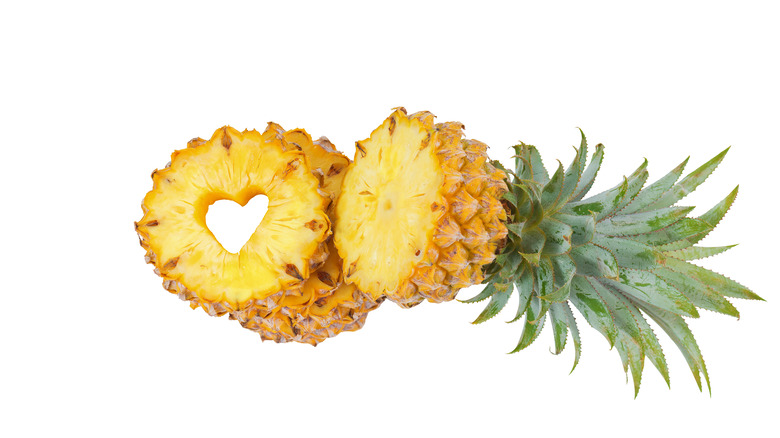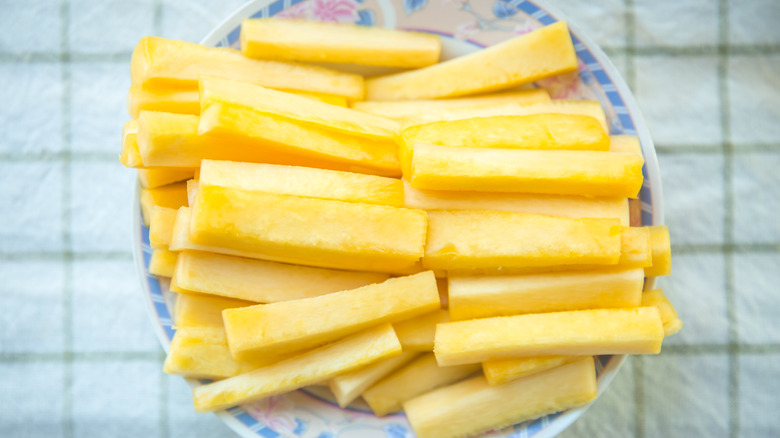Should You Be Eating The Core Of A Pineapple?
Pineapples are tropical fruit known for their sweetness and juiciness. Some even say their sweetness measures up to the sugariness of candies.
They are known for being a low-calorie fruit that yields high amounts of vitamins, nutrients, and minerals. According to the U.S. Department of Agriculture (USDA), one cup (165 grams) of pineapple is 82.5 calories. It contains 16.3 grams of sugar, 21.6 grams of carbs, and 2.3 grams of fiber. In addition, registered dietitian Julia Zumpano points out, "pineapple contains several minerals your body needs for proper function, including copper, potassium and magnesium" (via Cleveland Clinic). Other vitamins you'll find within pineapple chunks include manganese, vitamin C, iron, thiamine, folate, and B vitamins, points out Healthline.
Not only are pineapples rich in nutrients, but they also provide numerous health benefits due to their anti-inflammatory and antioxidant properties. Many health experts explain they aid in digestion, support weight loss efforts, fight inflammation and speed up post-workout recovery (per Cleveland Clinic).
Many pineapple cutting techniques involve removing the core, however. Pineapple cores tend to be fibrous, somewhat bitter, and lacking in juiciness when compared to their meaty neighbor. But how does the core stack up against the juicy fruit pulp? Is it safe to eat? And are there health benefits to be had?
Here's why you should be eating pineapple cores
While biting into a hard pineapple core sounds intimidating, don't let it scare you. It's safe to eat, explains Eating Well.
Also, this center is brimming with health benefits and nutrients, just like the rest of a pineapple. Based on the nutritional information provided by the USDA, a five-ounce (140 grams) serving of pineapple cores is 44.8 calories. It also offers 13 grams of sugar, 18 grams of carbs, and 1.96 grams of fiber. This means it's even fewer calories, carbs, and sugar than its fleshy counterparts (per Livestrong).
But what really sets the core apart is it's extremely rich in vitamin C. Pineapple cores contain 90% of the daily recommended amount, according to USDA. While the flesh yields less, at 88%, explains Livestrong. So if you're looking for a vitamin C-packed snack, eating pineapple cores may do the trick.
These centers also contain high concentrations of an enzyme called bromelain, notes Eating Well. It may even contain more than the fruit pulp. According to a 2017 study, "Queen" and "Smooth cayenne" pineapple core extracts have higher levels of bromelain than the flesh. Some research suggests this enzyme helps reduce swelling, pain, digestive issues, and sinusitis and treats damaged skin from burns, shares National Center for Complementary and Integrative Health. However, it's important to note this is preliminary research.
So, next time you find yourself deciding between tossing or keeping the core, remember, it's a nutritional powerhouse.


